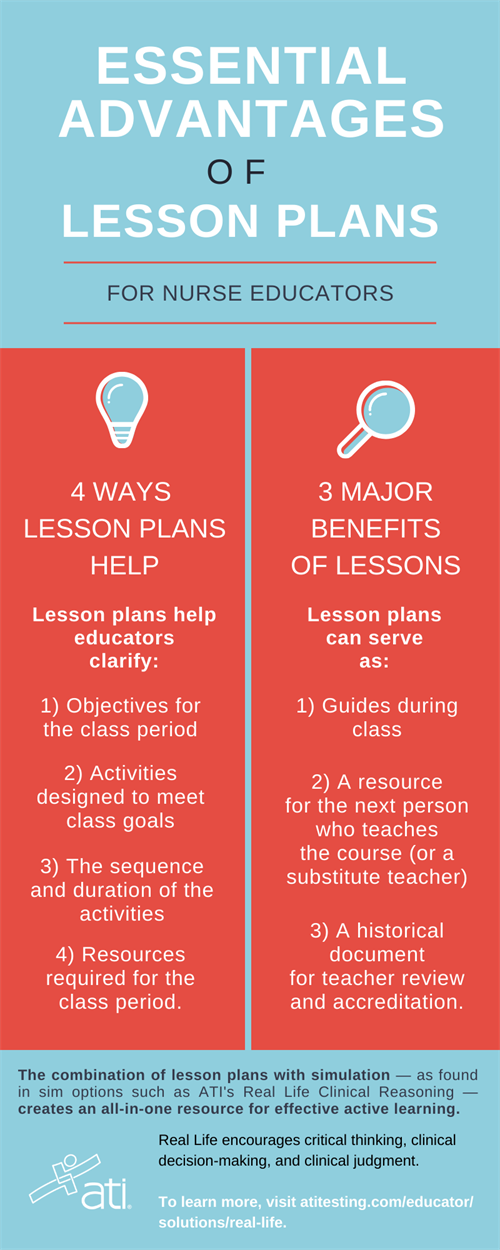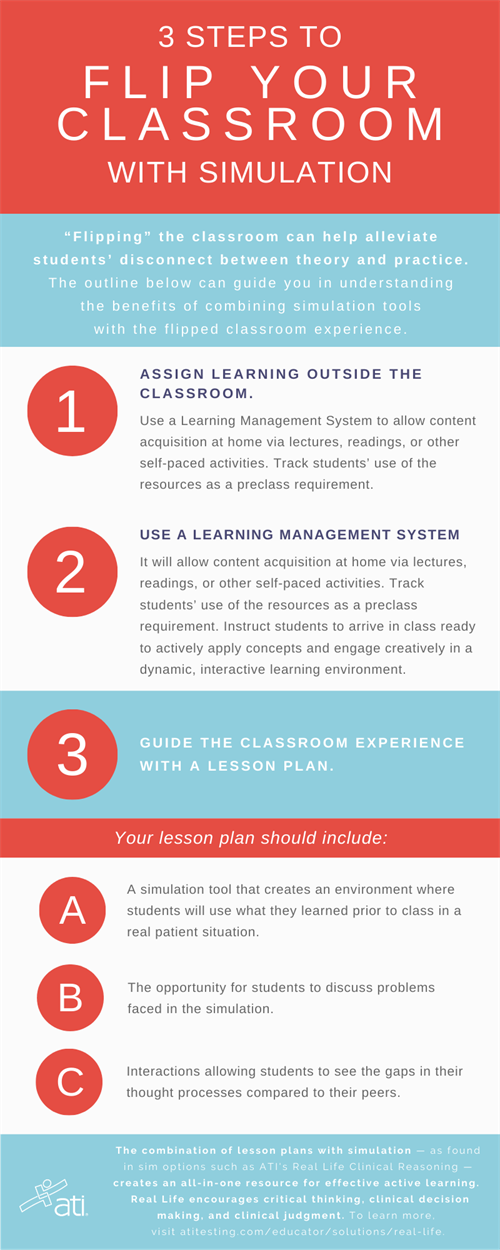3 LESSON PLANS FOR USING SCREEN-BASED SIMULATION
 A distinguished looking gentleman looks out at you from your TV screen. As if on a hinge, the top of his head flips open. Depending on the whims of “Monty Python” creator Terry Gilliam, a whirlwind of items flies out or pours in.
A distinguished looking gentleman looks out at you from your TV screen. As if on a hinge, the top of his head flips open. Depending on the whims of “Monty Python” creator Terry Gilliam, a whirlwind of items flies out or pours in. The comedy show’s stop-action animations kept viewers laughing for years, even after it stopped airing in prime time in 1974.
Unfortunately, more than 4 decades later, its infamous cartoon segments of a “hinged head” could represent the efforts of some nursing educators today. Hesitant to step from behind their podiums, these instructors rely almost exclusively on classroom lectures in which they attempt to pry open students’ minds and pour knowledge inside.
The method has proven to be less than effective, however, compared to newer techniques. Ironically, one aspect of “Monty Python” that does have a very positive tie in to today’s more engaging lessons: the “small screen” on which those original episodes appeared.
The screens, of course, have now switched from TVs to computers, and the show’s one-way entertainment has been replaced with engaging, interactive lessons using simulation.
STEP AWAY FROM THE LECTERN AND SWITCH TO ACTIVE LEARNING
Research into optimal education techniques has proven that “presenting ordered and classified information does little to prepare students to use knowledge.”1 Instead, increasingly, higher education is being asked to incorporate active-learning strategies into the classroom. While these strategies are not new in educational circles, they often are unfamiliar to higher ed instructors.In contemplating a move toward adopting modern methods, many educators become anxious. Their notes and PowerPoints serve as familiar road maps to their class-long lectures. They wonder about how to replace them. After all, no one would ask an actor to go onstage without a script. Thus, it seems similarly unreasonable to expect an educator to walk into a 2-hour active-learning class without a guide.
Fortunately, the solution for reluctant faculty is readily available: The prepared lesson plan — an educator’s road map to an active-learning classroom.
ACTIVE LEARNING DELIVERED VIA A VARIETY OF LESSON PLANS
Active learning engages students by using activities that promote analysis, synthesis, and evaluation of course content.One active-learning resource from ATI — Real Life Clinical Reasoning Scenarios — incorporates video, rich media, and branching logic to engage students. The tool’s “choose-your-own-adventure” format entertains students while also teaching them to apply clinical reasoning skills to lifelike clinical situations. Live actors in each video artfully portray the nuances of the client-nurse interaction.
When ATI first introduced the videos, its guidance in using them was for students to view them independently. Over time, however, educators created a multitude of methods for taking advantage of them: in the classroom, in the lab, and beyond.
When ATI consulting educators heard about these innovative ideas, they began re-examining the scenarios’ use, and new creative concepts began emerging.
“ATI gave considerable thought to the time challenges educators face,” said Janean Johnson, MSN, RN, CNE, an ATI Consultant with a robust background in clinical practice and nursing education. “Nursing faculty are given little or no release time to create activities that incorporate the most exciting new technologies — technologies designed to support deep learning — into their curriculum.” Thus, based on these new ideas, and borrowing from Real Life faculty users across the country, ATI developed 3 easy-to-use lesson plans for classroom integration of the active-learning scenarios. (Educators can, of course, continue assigning the scenarios for independent viewing, as well.) “We wanted to ease the workload of faculty while encouraging their adoption of valuable active-learning options,” Johnson added. “So we created lesson plans focused on making the scenarios easy to incorporate into existing curriculum. And we made sure to include all the necessary materials, resources, learning objectives, and evaluation criteria an educator needs. “The simulation scenarios plus the lesson plans create an all-in-one resource for effective active learning.”
THE VALUE OF LESSON PLANS IN NURSING EDUCATION
 Lesson plans serve as a stress-free way of preparing a full classroom experience that makes both teachers and students active participants in the learning experience.
Lesson plans serve as a stress-free way of preparing a full classroom experience that makes both teachers and students active participants in the learning experience.Lesson plans help teachers clarify:
- Objectives for the class period
- Activities designed to meet class goals (for active or “flipped” learning, some of these happen outside of class)
- The sequence and duration of the activities
- Resources required for the class period.
Lesson plans can also serve as:
- Guides during class
- A resource for the next person who teaches the course (or a substitute teacher)
- A historical document for teacher review and accreditation.2
Each lesson plan that accompanies Real Life Clinical Scenarios fulfills each of these features.
One important aspect of the lesson plans that shouldn’t be overlooked is their basis on the belief that nursing is first and foremost a practice discipline. (The plans’ creators — all experienced nurse educators — referred often to guidelines outlined in “Educating nurses: A call for radical transformation.”1 ) Thus, the educators paid close attention to ensuring students become active participants as they practice specific healthcare roles in unfolding clinical situations.
“Students learn by, through, and in situations that involve particular patients,”1 and Real Life follows through on this notion by giving faculty access to “particular patients” right in the classroom. As a result, educators enable the kind of situated learning so vital to a practice discipline.
ATI nurse educators developed 3 types of lesson plans for each scenario included in Real Life Clinical Scenarios: clinical day replacement, small groups, and the flipped classroom. Each type follows the same format, so they are easy to learn and implement.
3 LESSON PLANS TO DELIVER MEANINGFUL LEARNING
Educators can choose from a variety of lesson plans to mix up the activities that will keep students engaged. For Real Life Clinical Reasoning, the lesson plans include:
1) CLINICAL DAY REPLACEMENT
Traditional clinical nursing education, in many ways, is a great example of active learning strategy. However, it is expensive and resource-intensive, as is high-fidelity manikin-based simulation, which is sometimes suggested as a replacement for bedside care experience. Importantly, high-fidelity, manikin-based simulation was only one of several “stations” used in the National Council of State Boards of Nursing (NCSBN) National Simulation Study (2014) to replace traditional bedside clinical. Other less expensive simulation — such as role-playing, standardized clients, screen-based simulation (including Real Life), and skill stations — made up the constellation of opportunities for students in the study.
The lesson plans for a Clinical Day Replacement are based on this concept, though heavily dependent on the less expensive and resource-intensive Real Life. The lesson plans suggest a variety of activities for a 6-hour class period, including individual, small group, and large group viewing of the scenarios. High-fidelity, manikin-based simulation can be a part of this activity, if available. The “station” approach can be used as an alternative with the lesson plans.
2) SMALL GROUPS
Often, faculty find a need to teach small groups of students as a tutoring session, clinical pre- or post-conference, or as an activity while other students are rotating through the high-fidelity simulation lab. These lesson plans give an option for a 2-hour period that will engage students in clinical reasoning activities rather than reteaching sessions, as tutoring sessions often become, or unstructured discussion.
3) FLIPPED CLASSROOM
The lecture remains the standard method of teaching content in most colleges. But, once nursing students enter clinical, many feel they are on their own trying to integrate that knowledge.1
“Flipping” the classroom can help alleviate this perceived disconnect between theory and practice. The basic concept is that students learn content outside of the classroom, through prerecorded lectures, readings, or other self-paced activities, and come to class to actively participate with the instructor and their peers in a “dynamic, interactive learning environment where the educator guides students as they apply concepts and engage creatively in the subject matter.”3
Real Life’s Flipped Classroom lesson plans require students to do the work of content knowledge acquisition “up front” and at home. Many primary and secondary school educators’ tape old lectures and encourage students to watch them at home prior to class, as well as reading their textbooks, to prepare. This technique goes a long way toward satisfying students who feel that the role of the teacher is to impart knowledge. Nurse educators can use their Learning Management System to make lectures available to students and require their viewing as a pre-class requirement. The lesson plan then guides educators through a 2-hour classroom experience that encourages students to use what they learned at home in a real patient situation.
One byproduct of using Real Life in a flipped classroom — according to faculty who’ve spoken to ATI nurse educators — is that students hear how their colleagues think about clinical problems. Along with many other benefits, this dialogue opens students’ eyes to gaps in their thought processes compared to their peers.
FUTURE LESSON PLANS COULD BE BASED ON YOUR CREATIVE EFFORTS
 ATI was fortunate to have access to innovative classroom activities developed by Real Life users. Its team of on-staff nurse educators were able to turn those ideas into the lesson plans that accompany its videos. The advances don’t end there, however. ATI is always looking for creative ideas that will help faculty use its resources as effectively and efficiently as possible.
ATI was fortunate to have access to innovative classroom activities developed by Real Life users. Its team of on-staff nurse educators were able to turn those ideas into the lesson plans that accompany its videos. The advances don’t end there, however. ATI is always looking for creative ideas that will help faculty use its resources as effectively and efficiently as possible.
How are you using Real Life scenarios in your classroom? Share your ideas in the comments below or send a note to [email protected].
Your creativity could lead to enhancements in the future.
Learn more about how the long-term learning advantages of simulation. Read “2 experts explain how sim helps build clinical judgment skills.”
SOURCES:
1Benner, P., Sutphen, M., Leonard, V., Day, L. (2010). Educating nurses: A call for radical transformation. San Francisco, CA: Jossey-Bass.
2Jensen, L. (2001). Planning lessons. In M. Celce-Murcia (Ed.), Teaching English as a second or foreign language (403-407). Boston, MA: Heinle & Heinle
3Flipped Learning Network (FLN) (2014). The four pillars of F-L-I-P™ Retrieved from
http://flippedlearning.org/cms/lib07/VA01923112/Centricity/Domain/46/FLIP_handout_FNL_Web.pdf
